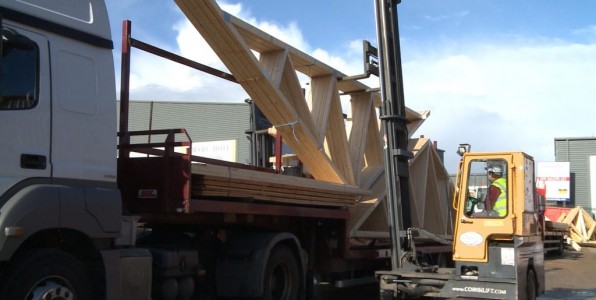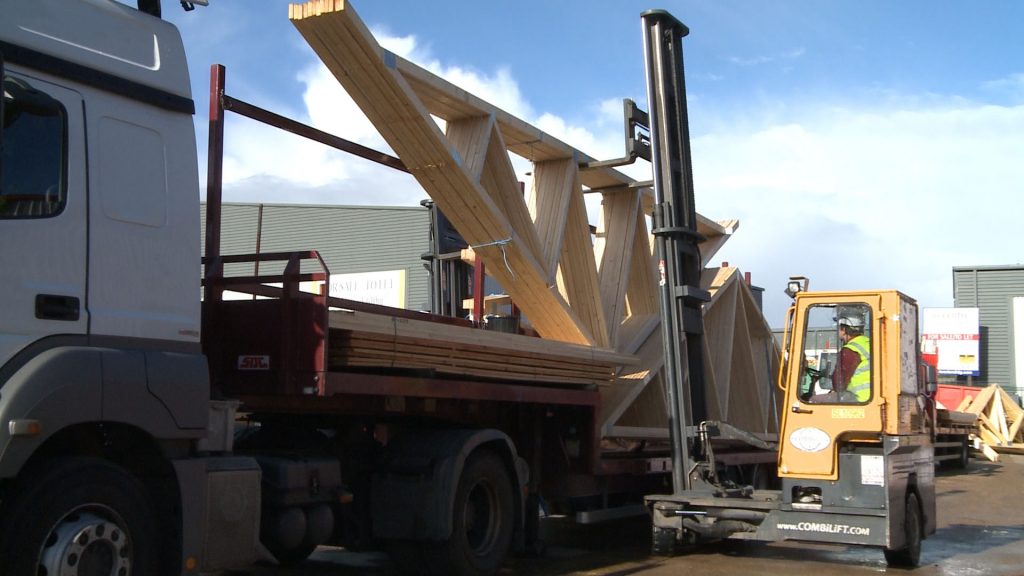Quick guide to delivery, storage and installation of Trussed Rafters

Quick guide to delivery, storage and installation of Trussed Rafters
New guidance
from the Trussed Rafter Association (TRA) is designed to reduce risk to
construction workers.
Improving
safety at height is vital so to help, the TRA has produced guidance on
delivery, storage and installation of trussed rafters.

Delivery
Planning is
essential when it comes to delivery of trusses. Information on the quantity,
weights and sizes of the trusses in the roof package will be provided in
advance to give site staff time to develop a safe construction phase plan for
unloading, handling and installing the trusses.
A level, dry
area is required for unloading and it must be clear of overhead obstructions
that could get caught on the trusses.
Mechanical
handling is the preferred method and it is the builder’s responsibility to
ensure that suitable equipment is available for the safe unloading of trusses.
Storage
Once on site
the trusses, either bundled or individual need to be stored fully supported and
restrained at all times to prevent them toppling over.
Trusses should
be protected from the elements and should never be left in or near water. When
longer periods of storage are anticipated the trusses should be protected with
covers allowing for ventilation.
Care should be
taken when removing bindings from a bundle of trusses. To avoid destabilisation
of the bundle, prior to the removal of the bands the builder should ensure
timber battens are fixed across the bundle in several locations with a part
driven nail in every truss. This will allow the safe and stable removal of single
trusses once the bands are removed.
Installation
The
installation of roof trusses should only be undertaken by suitably experienced
and qualified personnel, such as those with a Level 2 Diploma in Site
Carpentry.
A full
site-specific risk assessment must be carried out before any work commences.
Here are
several steps that builders should take before starting to install trusses:
- Check
and read all assembly drawings and information provided by the truss
supplier - Ensure
all personal protective equipment (PPE) is worn and correctly fitted - Ensure
scaffolding is in place and signed off - Make
sure that there is a safe working platform within the structure - Ensure
hop-ups and scaffolding edge protection are in place - After
reading the truss layout drawings, identify the easiest starting point
using the simplest roof of trusses.
Due to the size
and shape of trusses, mechanical handling is essential for all but the
smallest trusses. Temporary bracing needs to be used during the initial
stages of construction and where appropriate this will require input from a
temporary works specialist. Once a stable base is achieved with the first group
of trusses, this can be comprehensively braced providing a substantial element
from which subsequent work can take place.
Nick Boulton,
chief executiveof TRA said: “Educating the sector on all areas of
good practice is part of what drives the TRA. We believe that it is important
to share as much health and safety information and safe ways of working as
possible. By working with a range of partners, including the Home Builders
Federation and the HSE, we can ensure that the construction sector has access
to the latest information.�
Further
guidance on safely handling and installing trussed rafters is available via the
TRA website at www.tra.org.uk
Comments are closed